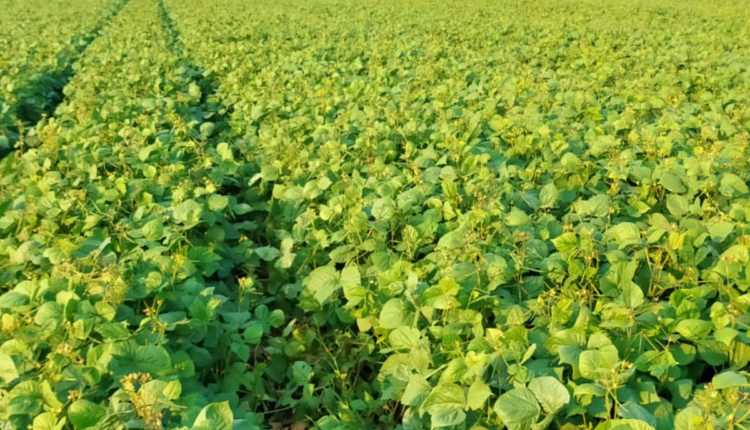Gram cultivation: Chana is a main crop of Rabi season. Gram can be cultivated in irrigated and unirrigated areas. There are many types of diseases in the crop. Along with this, many types of insects harm the crop. There is a possibility of harm to the farmer due to all these. Farmers take many measures to control paste in gram cultivation.
Farmer colleagues today know about the Integrated Drug Management (IPM). This method can protect crops from plant protection, increase or maintaining soil productivity as well as infection of pests and diseases. Due to this, farmers are expected to suffer less loss in production.
IPM Traditional, mechanical, biological and chemical pesticides in the method are used in such a way that the impact of pesticides on the crop should be minimized and the farmer does not have to face financial problems. If all stages are done in the correct order in integrated drug management, crops can be protected from pests.
Major diseases in gram crop
The gram crop causes many types of diseases such as covered diseases, dry-molestation, column rooting, ascocyte bleet, gray fungi, erectile dysfunction, rust, column melting, black root melon, fililodi and alternaneria blot.
Grain crop insect
Major pests in gram crops include insects like gram pods, termites, termites, lumps, semilopters, dal beans.
Treatment of diseases by traditional method in gram cultivation
The first phase in integrated drug management is the traditional method. Some things should be kept in mind in this phase. Let’s look at the main things below.
1. The residue of the previous crop before sowing should be removed from the field.
2. In the summer season, the farmer should plow the fields deeply. Due to this, the risk of seeds and soil diseases in plants is less. In this activity, the larvae, pupa and nymph of insects are destroyed.
3. Farmers should not cultivate gram in the field -borne field for about three years.
4. Use of cow dung at a hectare at a rate of 5 tons, reduces diseases like covered, pillar origin and dry original scatter.
5. Gram cultivation should be sown before October or in the first week of November. This reduces the risk of many diseases and pod borer pests. If there is an effect of erectile dysfunction and alternaria blight in the area of the farmer, sowing of gram should be done late.
6. Farmers can use weeds like Vesia Satyiva as a trap crop under the control of pod borer. Along with this, Melilotas Alva weed is done to reduce pods loss. If the density of the crop is low, then the outbreak of pod borer and gray mold will be less.
7. In order to reduce the effects of bickering in gram cultivation, inner cropping with linseed and coriander can reduce the effect.
Pests control with mechanical techniques in gram cultivation
5 pheromone trap per hectare should be used per hectare to monitor the pod penetrating insect. Farmer colleagues should monitor the crop continuously, so that plants afflicted with growth and rotting disease can be detected in time. If the diseases on the plant are detected at the right time, then it becomes easy to treat, due to which farmers do not have to bear the loss of crop.
The method of attracting the insects to save the gram crop also proves effective. To attract birds, the farmer should apply 3 to 5 feet long 20 khunti per hectare of T -size. Many insects such as Bubulux Ibis, Acridoterus Tristes, Pesse Dometicus, Sitekula Krameri come in Bhakti Birds.
Organic pest management in gram crop
For the prevention of diseases in gram crops, microorganic organisms such as Trichoderma and Sudomonas should be used for the treatment of seeds. Along with this, NPV and BT should be used in the fields. Bt formulations should be sprayed at the rate of 1-1.5 kg of gram.
Chemical control in gram cultivation
At present, chemical drugs in farming are being used to protect drugs and diseases affected by diseases. If the medicine is required in the crop, then it should always be kept in mind that drugs should be used by changing drugs instead of repeated use of a chemical medicine.
The use of immecin is reduced by spraying the first time in the early position of flowering bloom and after 15 days, the effect of pod borer is reduced. Apart from this, you can also use cypermethrin, chlorpyrifos and phenswell.
Main varieties of gram
If the farmers of Andhra Pradesh want to cultivate gram, then these advanced varieties can be used. Bharti (ICCV 10), JG 11, Phuleji 95311 (K), MMK 1 can be used. Assam farmers can use JG 73, Uday (KPG 59), KW108, Pusa 372. If other varieties are told, JG 315, Vijay, Jawahar Gram Kabuli 1, Uday, Karnal Chana 1.
Contact us- If farmers want to share any valuable information or experiences related to farming, they can connect with us via phone or whatsApp at 9599273766 or you can write to us at [email protected]. Through Kisan of India, we will convey your message to the people, because we believe that if the farmers are advanced then the country is happy.
You can connect with Kisan of India on Facebook, Twitter, and WhatsApp and Subscribe to our YouTube channel.



